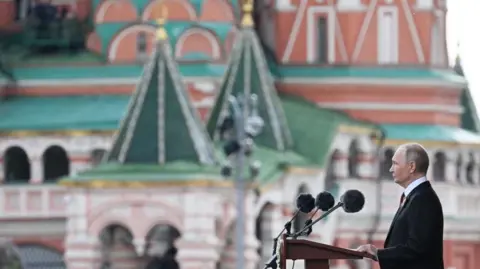How Russia Marks Victory Day: Modern Significance, Global Impacts, and Future Prospects

Russia has long commemorated Victory Day on May 9th as a symbol of unity, strength, and national pride. In 2025, this event took on new layers of meaning, as the country navigates shifting global alliances and internal pressures. From heightened security due to ongoing conflict with Ukraine to growing ties with China, Russia’s approach to Victory Day reveals much about its place in today's world.
The Historic and Contemporary Meaning of Victory Day in Russia
Victory Day commemorates the Soviet defeat of Nazi Germany in World War II. Traditionally, it serves as a rallying point for Russian society, underscoring resilience and sacrifice. Over the past several years, however, the holiday has evolved. In the context of Russia’s “special military operation” in Ukraine, the narrative now ties past triumphs to ongoing struggles. President Vladimir Putin has used Victory Day to reinforce national solidarity, linking the Great Patriotic War to modern military initiatives and the assertion of Russian sovereignty.
Heightened Security and International Diplomacy
Security concerns have reshaped this year’s commemorations. Russian cities, including Moscow, experienced travel disruptions and tight restrictions following recent drone attacks. Despite this, Russia invited leaders from various nations, signaling diplomatic intent amid semi-isolation from the West. Prominently, Chinese President Xi Jinping stood alongside Putin. Their collaboration emphasized Russia’s pivot towards Asian and Global South alliances, as detailed in BBC’s Victory Day parade coverage.
Among the assembled guests were leaders from Brazil, Venezuela, Serbia, Slovakia, and contingents from several Asian nations. The prominence of China during the parade is more than symbolic; it marks Russia’s deepening relationship with a key global power. For more insights into this display of international unity and its underlying motives, The Guardian’s live report explores the strategic significance of these diplomatic gestures.
Shifting Public Sentiment and the Global Perspective
Russia’s public perception has changed as the conflict in Ukraine continues. Many Russians desire peace, hoping for economic stability and improved living standards. The recent presence of U.S. President Trump as a mediator has raised hopes for a diplomatic solution. Still, internal challenges persist. Economic pressures grow as Western sanctions bite and oil revenues fall. Questions linger about how peace would reshape society, the economy, and the structure of power in Russia.
Independent opinion research reveals that many Russians believe peace is only possible through negotiations involving both Ukraine and the United States. However, doubts remain about the viability of long-term peace and the potential return of Western businesses. As explained in Foreign Affairs' analysis, these shifting expectations both fuel hope and risk future disappointment.
The Road Ahead: Challenges for Russia’s Society and State
Looking forward, Russia faces a set of complex challenges. The return of veterans and the demobilization of the war economy will test social cohesion. The Kremlin must balance the needs of a population weary of conflict with its political priorities. Should Western companies return after peace is brokered, consumer optimism could rise—but only if the transition is managed well. Persistent repression and strict loyalty requirements may further inflame tensions as the state seeks to maintain control.
The fate of Putin’s regime and Russian society rests not only on military outcomes but also on the country’s ability to adapt—both politically and economically—in a shifting world order.
Conclusion
Victory Day in Russia now means much more than honoring the past. It has become a lens into the country’s evolving identity, alliances, and prospects for peace. As Russia navigates these turbulent times, its future depends on how it reconciles tradition, societal needs, and global realities. The world will be watching to see which direction Russia chooses next.